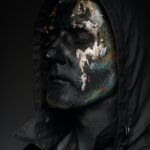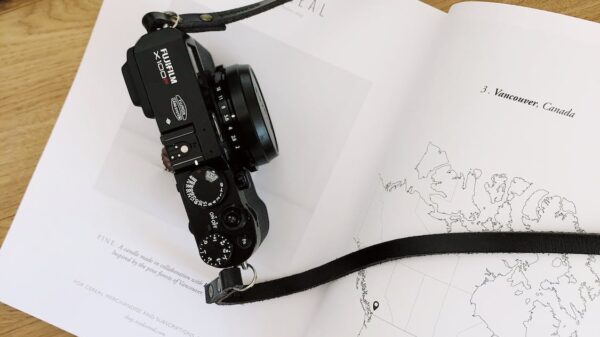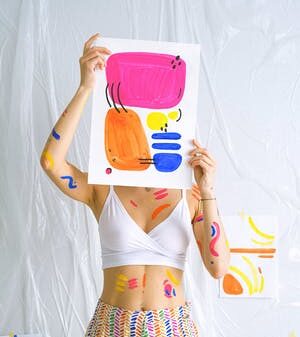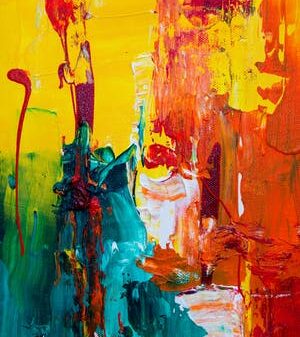Are you tired of traditional art forms? Do you want to explore new ways of expressing your creativity? Look no further than the world of Digital art exploration! With technology constantly advancing, artists are now able to create stunning pieces using digital tools and software. In this blog post, we’ll dive deep into the world of digital art and discover how it can unleash your inner artist in today’s digital age. Get ready to be inspired and amazed by what this exciting medium has to offer!
Introduction to Digital Art
Digital art is a form of art that is created using digital technology. It can be an image, a sculpture, a painting, or a drawing that is created using a computer. Digital art is often considered to be a type of new media art.
The term “digital art” was first coined in the early 1970s by artist Harold Cohen who used it to describe his computer-generated artworks. Since then, the term has been used to describe a wide range of artworks that are created using digital technology.
Digital art has many advantages over traditional forms of art. For one, it is much easier to create and edit digital artwork than it is to edit traditional artwork. Additionally, digital artwork can be easily shared and reproduced, which makes it more accessible to a wider audience.
However, there are also some disadvantages to digital art. One downside is that it can sometimes be difficult to achieve the same level of detail and realism as traditional forms of art. Additionally, because digital artwork is so easy to reproduce, it may be less valued by collectors and buyers than traditional artwork.
Different Types of Digital Art
Digital art comes in many different forms. Some of the most popular types of digital art include:
1. Photorealism – This type of digital art uses advanced software to create images that look extremely realistic. Many artists use this type of software to create digital paintings or illustrations.
2. Abstract – This type of digital art is less about realism and more about expressing creativity through color, shape, and form. Many abstract artists use software to create their own unique style of artwork.
3. vector graphics – Vector graphics are created using software that allows the artist to create images with clean lines and shapes. This type of digital art is often used for logos, illustrations, and icons.
Popular Software Programs for Digital Art
There are a ton of software programs available for digital artists these days. It can be tough to decide which one is right for you, but don’t worry – we’re here to help! Here are some of the most popular software programs used by digital artists:
Adobe Photoshop: Photoshop is a widely used program for both digital art and photo editing. It has a wide variety of features and tools that allow you to create almost anything you can imagine.
Corel Painter: Painter is another popular program that is often used by professional digital artists. It has natural media brushes that give your artwork a more traditional feel.
Sketchbook Pro: If you’re looking for a program specifically designed for drawing and painting, Sketchbook Pro is a great option. Its user-friendly interface makes it perfect for beginners, but it also has enough features to keep more experienced artists happy.
These are just a few of the many software programs available for digital artists. And don’t forget – practice makes perfect! The more you use these programs, the better you’ll become at creating amazing Digital art exploration.
Benefits of Digital Art
Digital art exploration provides artists with a wide range of benefits that can help them to unleash their creativity and explore the world of art in new and exciting ways.
One of the main benefits of digital art is that it provides artists with a vast array of tools and resources that they can use to create their art. These tools and resources include everything from software programs that allow artists to create digital paintings, to 3D modeling and animation programs that allow artists to create three-dimensional artworks.
Another benefit of Digital art exploration is that it offers artists a great deal of flexibility when it comes to creating their art. For example, if an artist wants to experiment with different colors or textures, they can easily do so by using the various editing tools that are available in most digital painting programs. Additionally, if an artist wants to add movement to their artwork, they can use animation software to create animations or even videos.
Digital art also allows artists to share their work with a wider audience than ever before. Thanks to the internet, artists can now share their artwork with people all over the world via social media or online galleries. This means that more people than ever before have the opportunity to enjoy and appreciate the work of talented digital artists.
Creating a Workflow for Digital Art Projects
Assuming you’ve already gathered the necessary tools for your project, the next step is to create a workflow that will help you see your project through from start to finish. 1. Define Your Goals
What exactly are you hoping to achieve with your digital art project? What is your endgame? Having a clear idea of what you want to accomplish will help you stay focused and on track as you work.
2. Sketch Out Your Ideas
Once you know what you want to do, it’s time to start brainstorming how you’re going to do it. This is also a good time to start playing around with different color schemes and compositions.
3. Create a Rough Draft
Now that you have a general idea of what your project will entail, it’s time to start putting everything together in a more concrete way. The goal at this stage is simply to get everything down on paper (or screen).
4. Make Revisions and Adjustments
Once you have a rough draft, it
Tips and Tricks for Successful Digital Art Projects
As someone who’s been dabbling in digital art for years, I’ve picked up a few tips and tricks that have helped me to create successful projects. Here are some of my top tips:
1. Plan ahead and sketch out your ideas before you start. This will help you to visualize what you want to create and make the whole process much easier.
2. Use reference images. Whether it’s a photo of a person or object you want to draw, or simply inspirational images for your project, having reference material on hand will be a huge help.
3. Experiment with different mediums and software programs. There are so many options out there, so don’t be afraid to try new things until you find what works best for you.
4. Take your time and don’t rush the process. Rome wasn’t built in a day, and neither is a great digital art piece! Give yourself time to explore and experiment, and the results will be all the better for it.
5. Have fun! The most important thing is to enjoy the process and let your creativity flow freely. If you’re not enjoying yourself, it’ll show in your work.
Conclusion
Digital art is a growing trend, and exploring this world can be an incredibly rewarding experience. With the right tools and techniques, you can tap into your creativity to create stunning works of art that are sure to impress. Whether you’re just starting out with digital art or if you’ve been creating it for years, we hope our guide has provided some useful tips on how to unleash your creative potential in the digital age. So what are you waiting for? Get started today and start expressing yourself through digital art!










